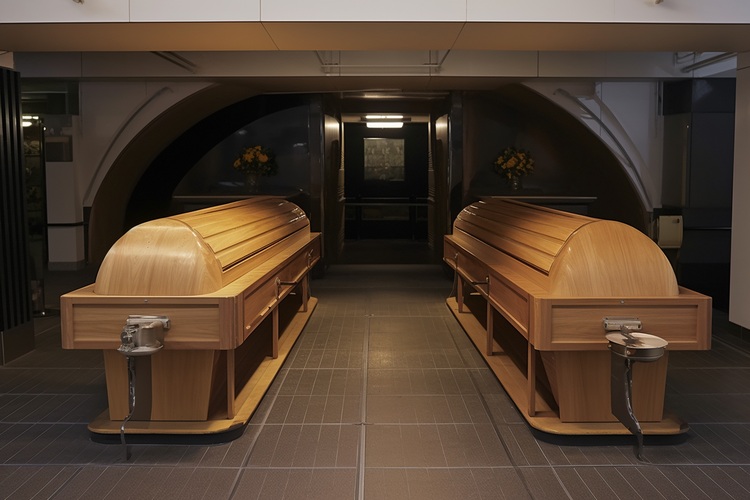Step-by-step guide to cremation process United Kingdom 2025: preparations, procedures, expectations
Cremation is a common method of handling human remains in the United Kingdom, governed by strict protocols to ensure dignity, accuracy, and environmental responsibility. This guide (2025) explains preparations, procedural steps, and what families can expect before and after cremation.

Starting with official documentation and permissions
Before any cremation can occur in the United Kingdom, a series of legal and administrative steps must be completed. Funeral directors work closely with the family of the deceased to gather essential documents including:
- A valid death certificate completed by a qualified medical practitioner who attended the deceased during their final illness.
- Permits authorizing the cremation, which involve scrutiny from medical examiners—a newly statutory requirement introduced in September 2024.
The death certification system has been reformed to improve accuracy and transparency. Now, after the attending medical practitioner proposes a cause of death via a Medical Certificate of Cause of Death (MCCD), an independent medical examiner reviews this certification before cremation proceeds. This reform ensures that every death is scrutinized carefully, reducing errors and upholding public trust.
Each deceased individual receives a unique identification tag and a ceramic disc bearing a unique code, which remains with the body throughout the cremation process. This rigorous tracking system prevents misidentification and ensures families receive the correct ashes.
Preparing the body for cremation with care and respect
Preparation of the body includes a series of carefully performed steps designed to maintain dignity and meet safety standards:
- Removal of all medical devices such as pacemakers and insulin pumps, which could pose safety risks during cremation.
- Cleaning and personal grooming of the deceased, including closing eyes with gentle pressure, combing hair, and cleaning the mouth.
- Dressing the body in a simple gown or clothing chosen by the family that complies with cremation safety rules (e.g., excluding synthetic materials like PVC).
- Families may be involved in dressing or placing small, safe mementos with the body if desired.
Embalming is generally not required for cremation in the United Kingdom and is only performed if specifically requested by the family. Documentation records every action taken to maintain accountability and respect.
Transportation and handling before cremation
Once the death is verified by a qualified professional (e.g., GP, paramedic or nurse), a funeral director discreetly collects the body from the place of death or mortuary. The body is:
- Transported in a covered stretcher within a hearse or private ambulance.
- Kept in a temperature-controlled environment to maintain appropriate conditions until cremation.
These procedures ensure dignified, professional handling at every stage before the cremation itself.
The role and specifications of the coffin
The deceased is placed in a cremation-appropriate coffin, which serves multiple purposes:
- Ensuring safe handling and containment during cremation.
- Contributing as fuel during the cremation process.
- The coffin materials must comply with regulations; for example, clothes or shoes made of problematic synthetic materials are removed.
Jewellery is typically removed and either returned to the family or, if requested, cremated with the body (though most jewellery does not survive the process intact).
The cremation procedure itself: what happens in the crematorium?
The actual cremation takes place in a specially designed furnace called a cremation chamber or retort. Important details include:
- The chamber operates at temperatures between approximately 1,400 and 1,800 degrees Fahrenheit (760 to 980 degrees Celsius).
- Cremation typically lasts between 90 minutes to 3 hours depending on factors such as the individual’s bone structure and medical history.
- The high temperatures reduce the body to bone fragments in a controlled and respectful manner.
Modern crematoria are equipped with advanced filtration systems designed to reduce environmental impact, meeting strict regulatory safety and cleanliness standards.
Handling the ashes after cremation
Following the completion of cremation:
- The remaining bone fragments are carefully collected and processed into ashes, which have a fine, sand-like consistency.
- The typical volume of ashes from an average adult ranges between 3 to 4 pounds (approximately 1.4 to 1.8 kilograms).
- These ashes are placed in a temporary container or an urn chosen by the family.
- The unique identification ceramic disc retrieved from the coffin accompanies the ashes as proof of identity and authenticity.
Families can then decide how to hold a memorial, scatter the ashes, or keep them in a meaningful place.
Legal and procedural safeguards to ensure accuracy and dignity
One-person-at-a-time cremations are mandatory in the United Kingdom. Identification tracking combines hospital-style digital systems and physical markers such as the ceramic identification disc. This meticulous tracking system:
- Prevents mix-ups or errors.
- Allows families to have confidence in receiving the correct ashes.
- Enhances transparency throughout the process.
Furthermore, the updated death certification regulations require independent medical examiner scrutiny, improving the overall integrity of cremation authorizations.
Aftercare and family guidance
Families are supported throughout the process by funeral directors and cremation service providers who:
- Explain what documentation is required and the timelines involved.
- Offer clear information on every stage of the process.
- Provide options for ashes handling and memorialization.
- Encourage questions and participation, accommodating cultural or personal preferences.
Understanding the steps involved fosters peace of mind in a challenging time and helps families make informed, dignified decisions.
Cremation in the United Kingdom in 2025 is a regulated, transparent, and carefully managed process. From initial legal permissions and respectful body preparation, through to cremation procedure and return of ashes, the process prioritizes dignity, accuracy, environmental responsibility, and family support.
Sources
- Pure Cremation: How is a body prepared for cremation?
- UK Government: An overview of the death certification reforms (August 2024)
- [Informational insights on modern cremation practices]
Disclaimer: Prices, regulations, and availability mentioned in related contexts often vary by location and service provider. Readers should verify specific requirements and options with local funeral directors or official sources in the United Kingdom.




